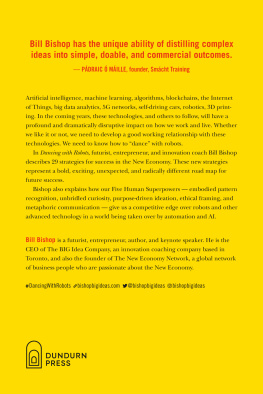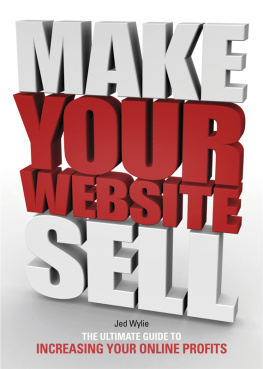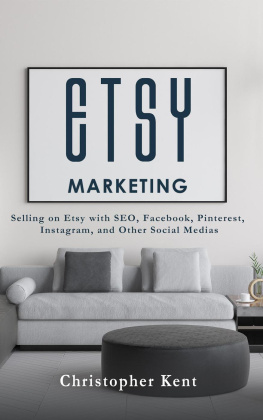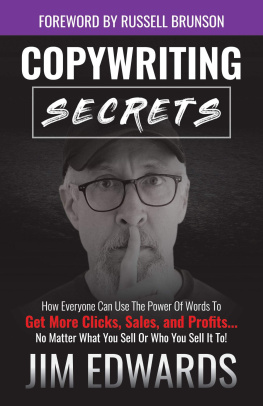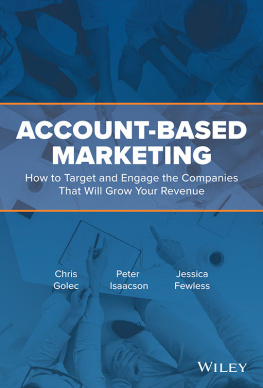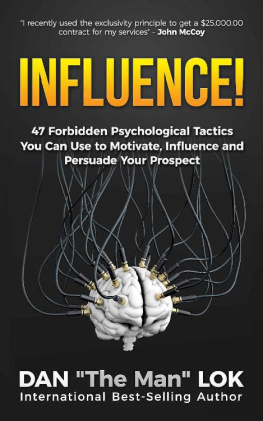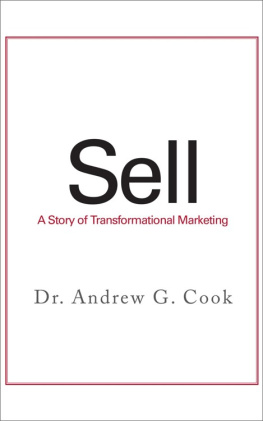HOW TO SELL A LOBSTER
All men can see these tactics whereby I conquer, but what none can see is the strategy out of which victory is evolved.
Sun Tzu
v vi
INTRODUCTION A SERIES OF FORTUNATE EVENTS
I had never been able to get a rise out of my uncle. A generally quiet fellow and a lawyer by trade, my uncle always maintained a pretty even keel. But one night at a family dinner party, I got him laughing uproariously. I was telling him about how I employed a special marketing trick years before to sell more than 1,400 lobsters in a waiter contest. He thought the story was hilarious.
I cant believe you did that! he said between gasps and guffaws. Its outrageous! Its ridiculous! And it really worked? Thats amazing. My uncle was incredulous, but he was also quite impressed. I had touched a nerve.
Thats when the lightening bolt of inspiration struck. I thought, if my uncle thinks the lobster story is funny and enlightening, then other people might think so too. Perhaps I could write a humorous book about the lobster contest and other key moments in my life when I learned an important lesson about sales and marketing. Maybe it could be a different kind of book from the three more academic books I had written previously and from all the other business books out there already. Right then and there I decided to write a book called How to Sell a Lobster.
From the start I knew How to Sell a Lobster could be no ordinary book. After all, I had led no ordinary life. I had done a lot of things many people find surprisingand sometimes a little unsettling.
It all started when I was eight years old. Some pals and I were rummaging through some boxes in a back alley when we discovered a big crate of calendars. Although it was July, and the year was more than half spent, I was convinced we could sell the calendars, and use the cash to buy some candy and make other important purchases.
We set up a little booth and positioned ourselves on the sidewalk at a busy intersection. I made a bright red sign that read: Calendars For Sale. 10 cents. But after about half an hour, we had sold only three measly calendars, so I changed the sign. Now it read: Special Calendar Sale. Two for one. Only 20 Cents. Get Them Before They Are Gone. We also enlisted my friends little sister Suziewho was really adorableas our sales representative.
The change in our fortunes was immediate and dramatic. The adults walking by thought the sign was hilarious, and they thought Suzie was really cute. Within two hours we sold 200 calendars and pocketed a cool $20, which we spent just as quickly on a hearty feast of bubble gum, suckers, and Cracker Jacks.
That was just the beginning of something big. At the age of ten, I worked after school at my parent's marketing company. For $1.65 an hour, I stuffed envelopes and fooled around with the office equipment. One Friday afternoon the postage meter man caught me red-handed launching paper airplanes by stuffing them through the new electric postage machine. He was really angry and threatened to confiscate the equipment, but I thought it was really funny, and frankly a darn good idea.
When I turned thirteen, my parents gave me a much-deserved promotion, and offered me a 25-cent raise if I would help them with a retail promotion they were running. Resplendently attired in a gargantuan frog mask and bright green, sequined tuxedo, I patrolled a local shopping mall, handing out balloons and prizes to shoppers and their children. It was an utterly degrading assignment, but I hid my embarrassment beneath my amphibian mask.
But that was not to be the end of my debasement. The following spring, I found myself in the same mall dressed as a pink bunny rabbit, doling out Easter candies from a little hand basket. This genderbending gig, which took twenty years of intense therapy to process, convinced me to explore the world of business and to try to find a better way to make a buck.
Although it didnt seem that way at the time, a series of fortunate events ensued. My next job was washing hundreds of smelly, greasy pots during interminable ten-hour shifts. Next, I spent two weeks making and selling candy floss at a summer carnival. Then I sold hot dogs at an amusement park, followed by a job hawking newspapers on a street corner. I also prowled my neighborhood raking leaves, shoveling snow, and doing odd jobs for little old ladies. These forms of employment occupied me until the age of fifteen.
I dont know why I was so motivated and ambitious at such an early age. A lot of these jobs were really hard and some of them were disgusting, (Believe me, if you ever handle candy floss for two straight weeks, you will understand the true meaning of disgusting.) But something told me that all of these work experiences were leading somewhere. I could tell that each job was teaching me something, but at such a young age I wasnt sure what the lessons were.
Over the next decade, I had scores of other jobs; I worked as a movie usher, a chauffer, an oven cleaner, a ski-lift operator, a tennis instructor, and a computer operator. Then I got a job working as a waiter, and achieved immortality of a sort by selling many, many lobsters. This episode, which is fully documented in chapter one, taught me an important lesson about packaging and marketing.
Following graduation from journalism school at the age of twenty-five, I discovered that newspaper jobs were scarce so I decided to start a community magazine with a friend of mine. As a two-man operation, we learned fast what it takes to run your own business. We worked hard and made no money, but we had a great time.
Two years later, I decided to give up the magazine and get a real job. I went to work at a corporate PR company and hated every minute of it. I hated the office politics and the long, boring meetings. By the time I left two years later, I even hated the color of the walls. I knew I had to be my own boss, even if that meant a life of starvation and penury. So I started my own marketing company called Bishop Communications Inc.
Things got off to a scary start. The day after I quit my job, the stock market crashed. That was October 1987, and I thought I had made the biggest mistake of my life. But I was wrong. Starting my own business was the best decision of my life. Since that time, we've worked with more than 10,000 business owners from just about every type of company and industry. Weve helped them develop some really big ideas to get more customers and make more moneysometimes a lot more money.
From my years as a business and marketing coach, Ive learned a thousand things that dont work, and a handful of things that work really well. Ive also learned that the world has completely changed. With the advent of globalization, computers, and the Internet, the old ways of doing things just dont work anymore. All of the lessons we learned in school, and at the knees of our kin, no longer work. In this postindustrial age, we need to entertain new ideas and explore new ways of doing things. We need to turn everything on its ear and become more entrepreneurial. We need to learn new ways to sell lobsters.



